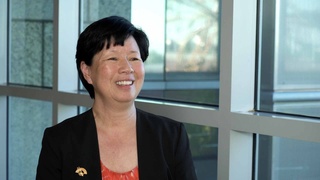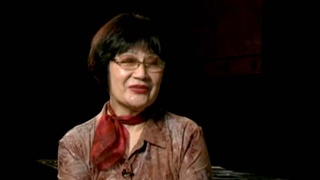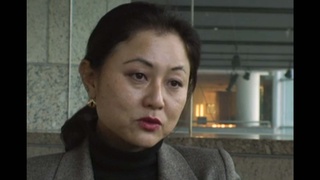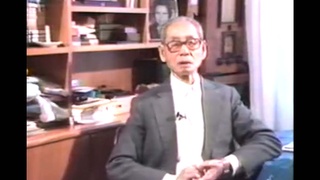Interviews
Avoiding the Japanese military
I*: And why did you return to the United States?
Well, that was before the Second World War. And my parents was worried that if I stayed in Japan, they might take me into their, you know, as the soldiers and go to the war. So, I had a citizenship [in] United States. So, if I come back in the United States, the Japanese government can’t, you know, can’t call me for the military. So that was the reason.
* "I" indicates an interviewer (Daniel Lee).
Date: February 4, 2004
Location: California, US
Interviewer: Daniel Lee
Contributed by: Watase Media Arts Center, Japanese American National Museum
Explore More Videos

Camp stories impact on her career
Sansei judge on the Superior Court of Los Angeles County in California


Inclusiveness of the first Japanese colony in Paraguay (Spanish)
Nisei Paraguayan, Researcher

Nikkei contributions to Paraguayan agriculture (Spanish)
Nisei Paraguayan, Researcher

Concentration camp from a Japanese mother’s point of view (Japanese)
Shin-Issei from Gifu. Recently received U.S. citizenship

Leaving for the States without telling my parents (Japanese)
Shin-Issei from Gifu. Recently received U.S. citizenship

Makegumi - Movement to regognize the defeat of Japan (Japanese)
A central figure for the “Makegumi” (defeatists)

Parent's immigration to Peru
(b. 1942) Japanese Peruvian incarcerated in Crystal City

Didn’t speak Japanese until moving to Japan
(1928 - 2008) Drafted into both the Japanese Imperial Army and the U.S. Army.

Strictly American, but sympathize with Japan
(1919-2020) Member of the 1800th Engineering Battalion. Promoted Japan-U.S. trade while working for Honda's export division.

Moving to Brazil wanting to see the world (Japanese)
Kasato-maru immigrants




Grandfather's arrival in the U.S., experiencing discrimination
(b. 1939) Japanese American painter, printmaker & professor
